Lille ticks a lot of the boxes for a rewarding city break.
Its Old Town (Vieux Lille) is a glorious confection of 17th-century buildings, cobblestone streets and elegant squares. The city’s exuberant architecture is a testament to its rich history.
Your stomach will thank you for its Flemish cuisine and sweet treats. And if that’s not enough, Lille is a quick and easy train ride from other major European cities, including London and Brussels.
I like it so much that I’ve visited three times and am excited to share my thoughts on how to spend a weekend in Lille. Hit the ground running with my travel guide, packed with top tips and a suggested 2-day itinerary.
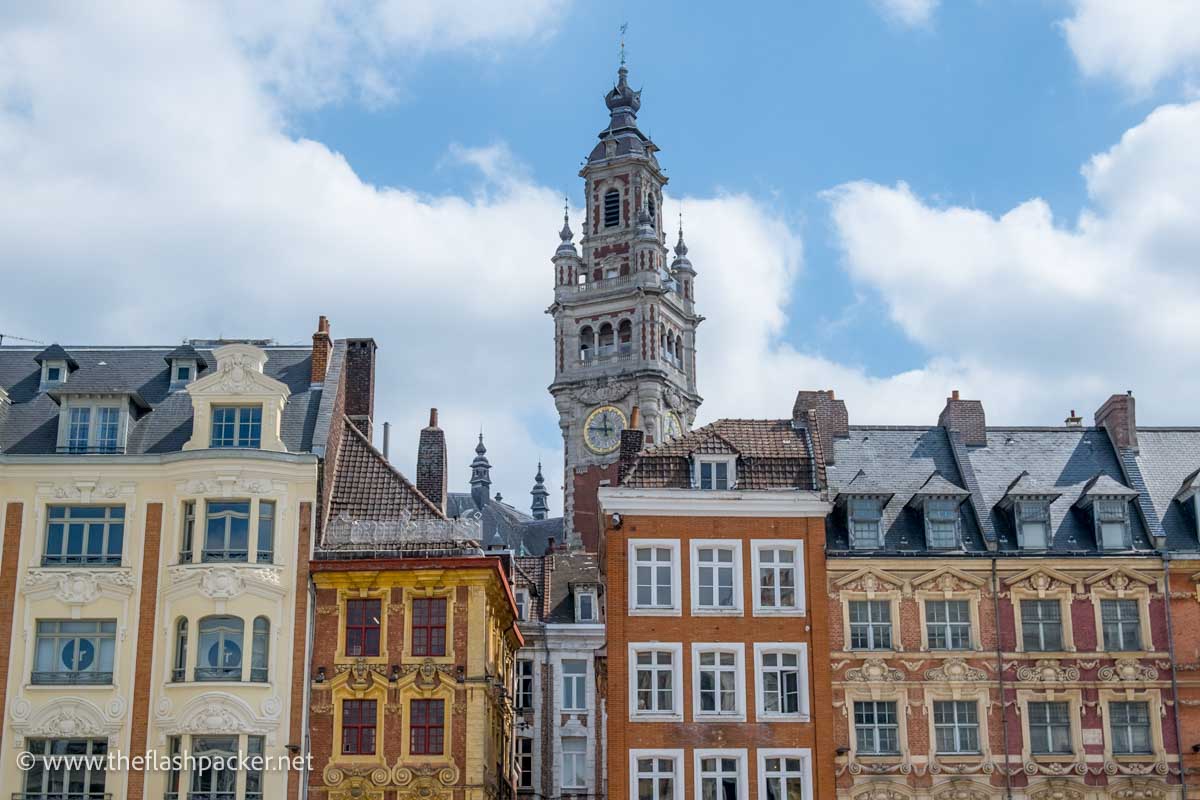
Some articles on this website contain affiliate links. This means that I may earn a small commission if you make a purchase through these links. As an Amazon Associate, I earn from qualifying purchases. Read the full disclosure here.
Suggested 2-Day Lille Itinerary
DAY ONE: Explore Vieux Lille
As most of the Old Town’s must-see attractions are close to one another, Lille lends itself beautifully to a self-guided walking tour.
DAY TWO: Palais des Beaux-Arts, Citadelle Vauban and La Piscine de Roubaix
Lille is Northern France’s cultural hub and you’ll visit two of its jewels on your second day: Palais des Beaux-Arts, its fine art museum, and La Piscine de Roubaix, an extraordinary art gallery located in a former Art Deco swimming pool. Set in picturesque parkland, Vauban’s Citadel is an architectural jewel.
Day 1: A Self-Guided Walking Tour of Old Lille (with Map)
My self-guided walking tour of Vieux Lille has ten stops, starting at Musée de Hospice Comtesse and finishing at the Beffroi de Lille:
From start to finish, it covers a distance of less than 2 miles. Click here or on the map for step-by-step directions and to send to your phone.
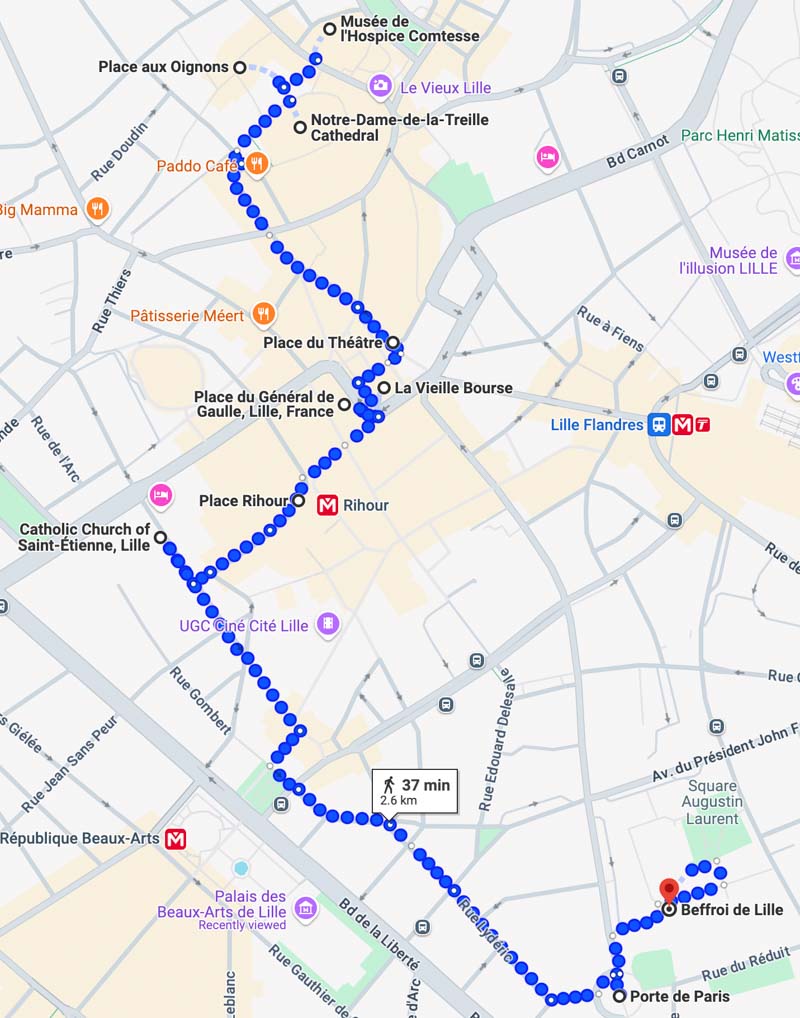
1. Hospice Comtesse Museum
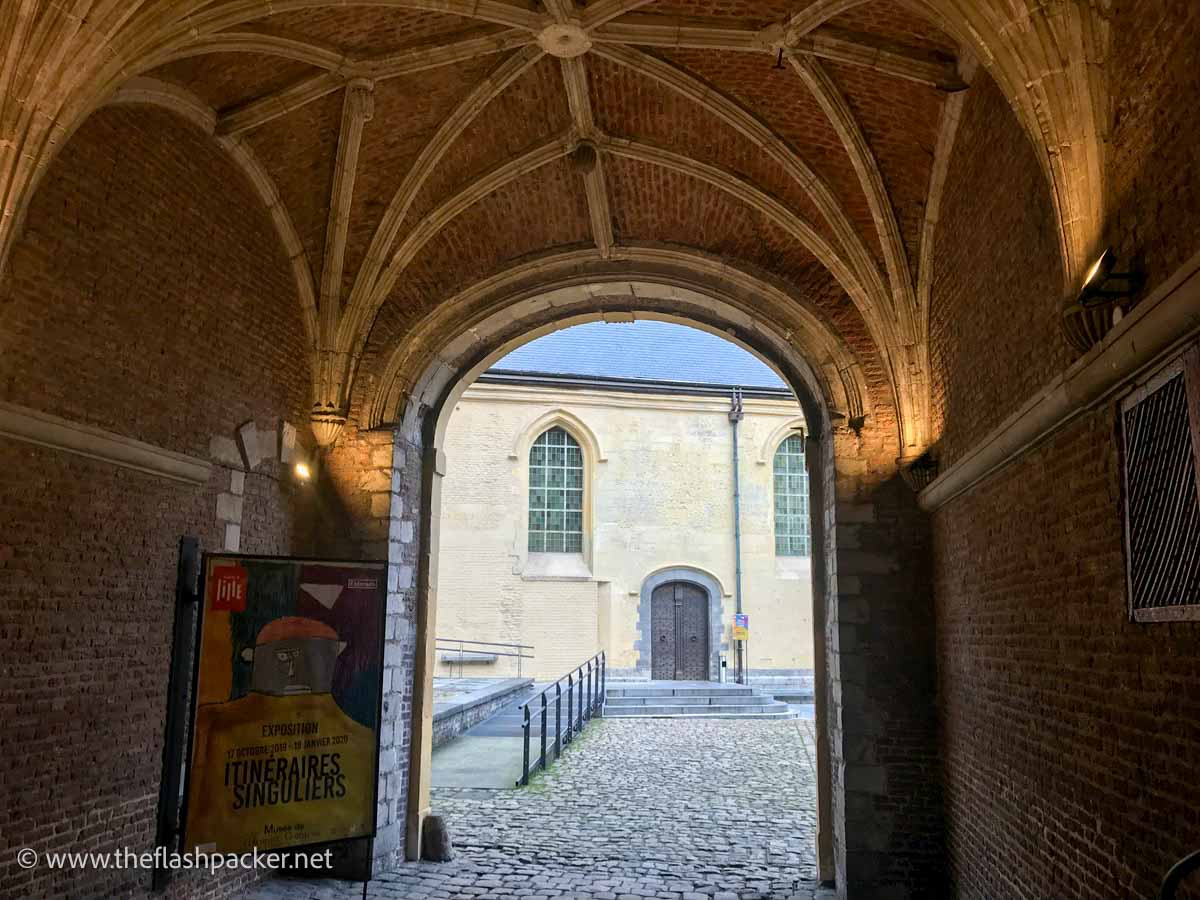
Founded by Countess Jeanne de Flandres, this was a hospital from 1237 until 1939. It is now the city’s museum and displays Flemish paintings, tapestries, wood sculptures and porcelain.
Check current opening hours and ticket prices on the official website.
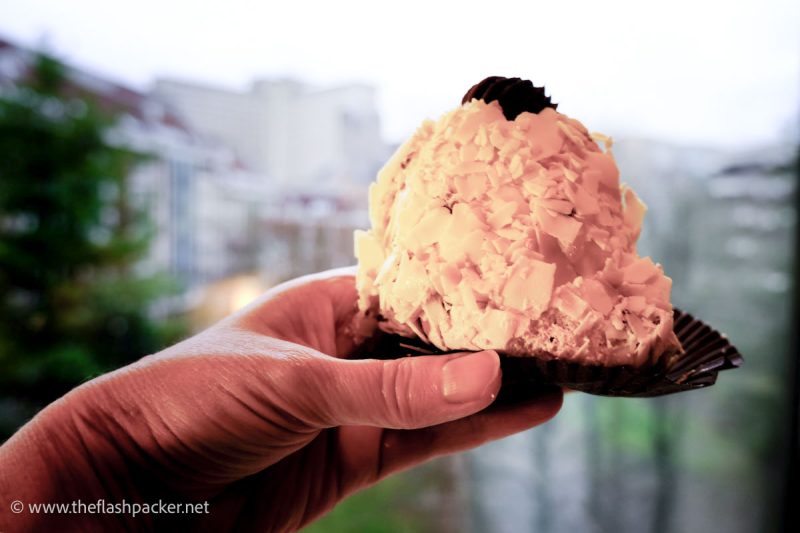
Aux Merveilleux de Fred
Stop at this pastry shop opposite the Hospice Comtesse Museum for a crispy and creamy indulgence. Merveilleux – literally meaning marvellous – is a cloud of light meringue coated with whipped cream and covered in chocolate shavings.
Address: 67 Rue de la Monnaie, 59800 Lille
2. Place aux Oignons
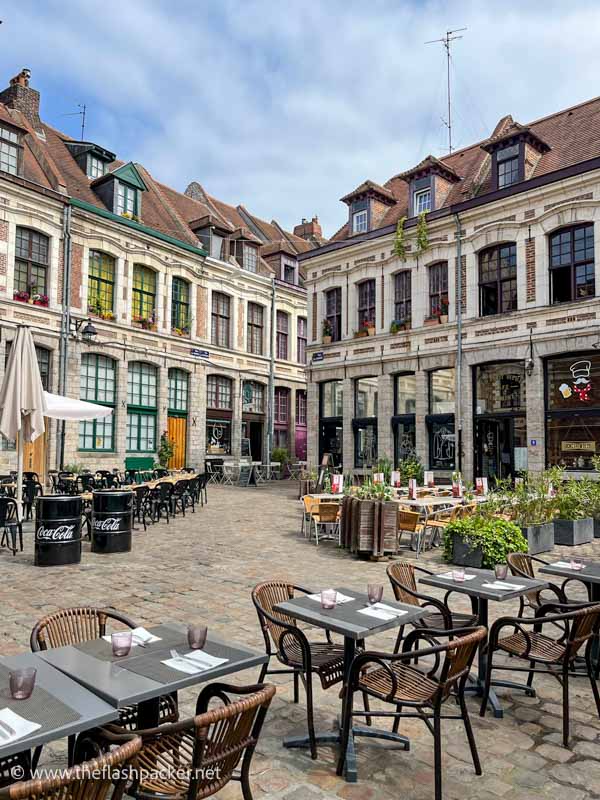
This pretty square formed part of the fortress of the Counts of Flanders in the Middle Ages. Today, it is home to several good restaurants.
3. Notre Dame de la Treille
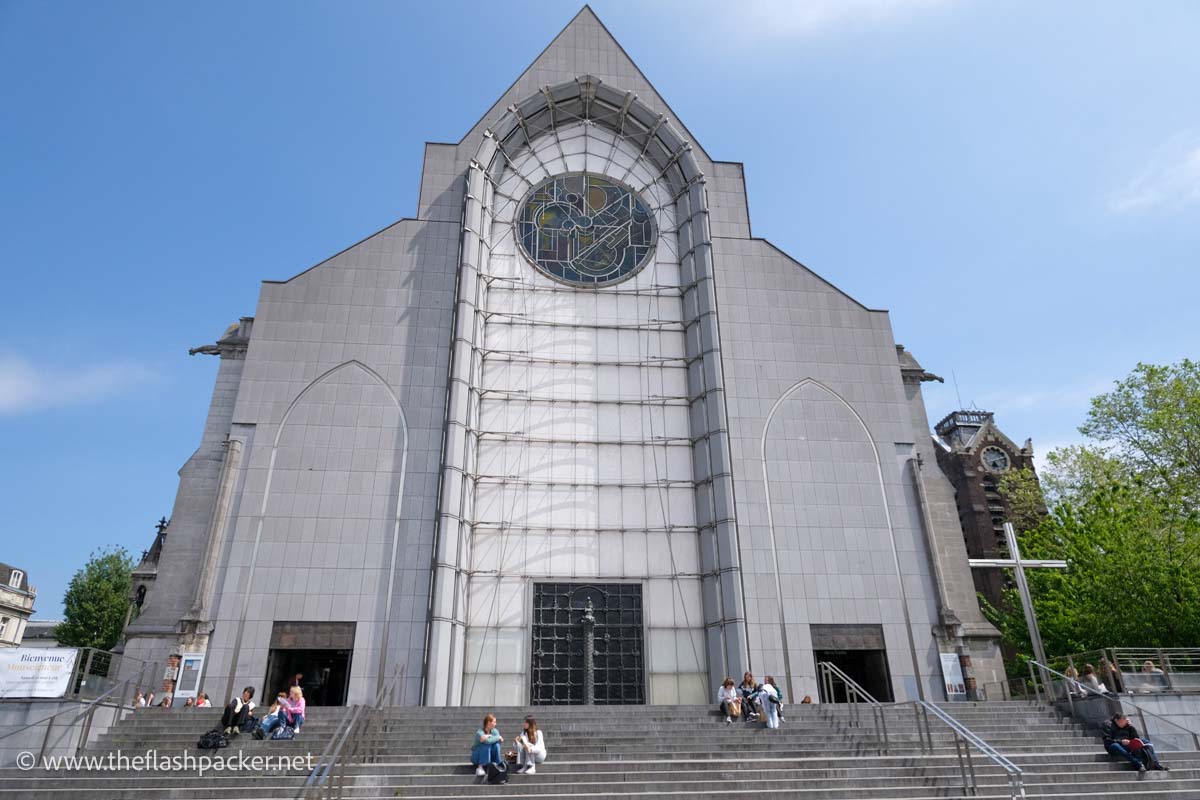
Lille’s cathedral is a wonderfully weird mongrel, a dazzling collision of traditional and contemporary architecture.
When its foundations were laid in 1854, it was conceived as a building in the style of the great 13th-century Gothic cathedrals. However, work stopped when funds dried up in 1947 and it wasn’t completed until 1999.
Outside it’s unremarkable, sporting a modern façade made from 110 marble sheets. Inside, it’s all soaring Gothic arches with a striking rose window featuring unusual symbols, including UFOs & astronauts, said to represent the cycle of death and resurrection.
Don’t miss La Sainte Chapelle behind the main altar. It has a small 12th-century statue of the Virgin Mary and an exquisite mosaic floor.
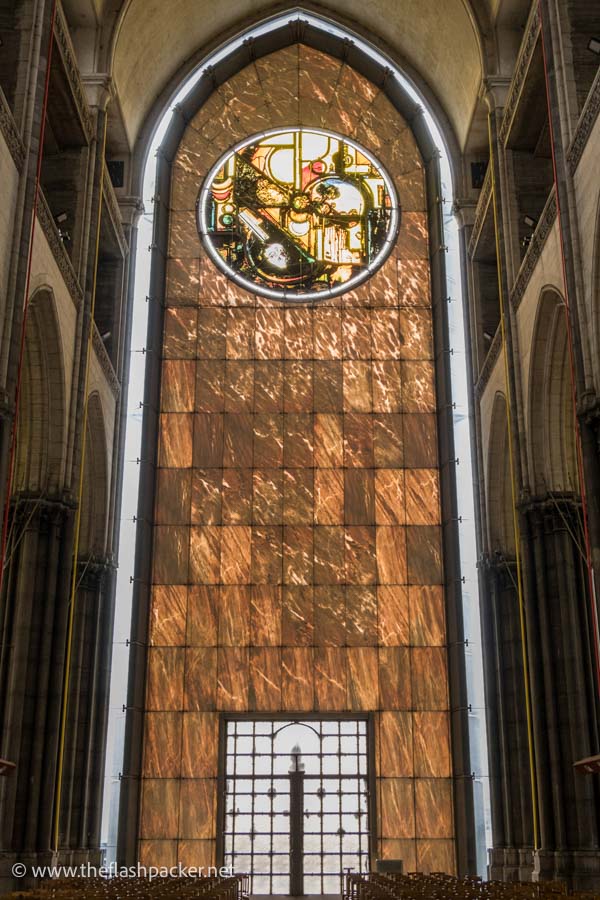
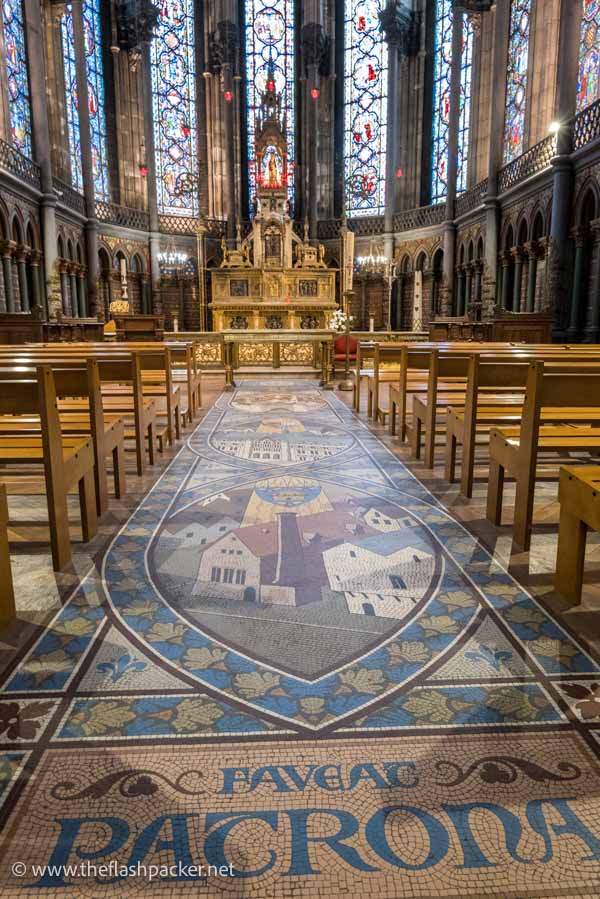
Lille Cathedral is free to visit and you can check current opening hours here.
4. Place du Théâtre
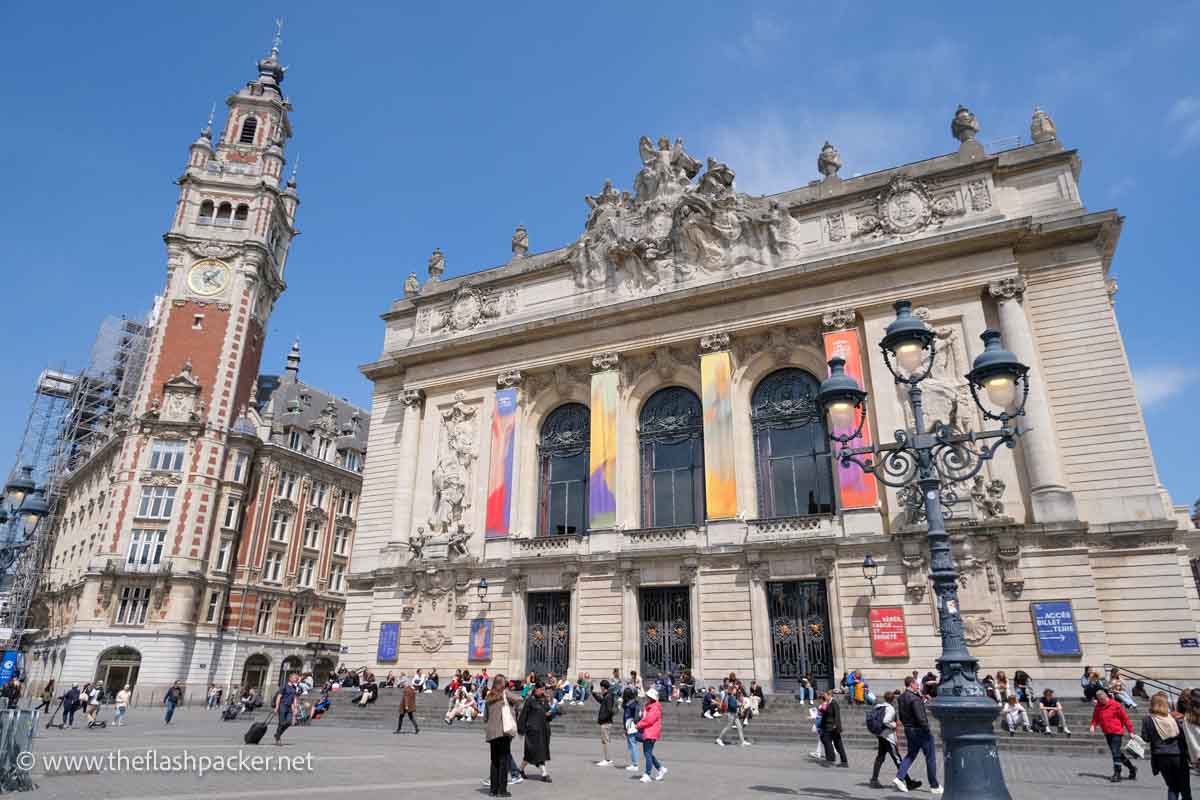
This lively square is lined with historic buildings, including the gleaming Opéra de Lille, topped with an overblown sculpture of the Triumph of Apollo, and the neoclassical Chamber of Commerce with its landmark clock tower.
5. La Veille Bourse
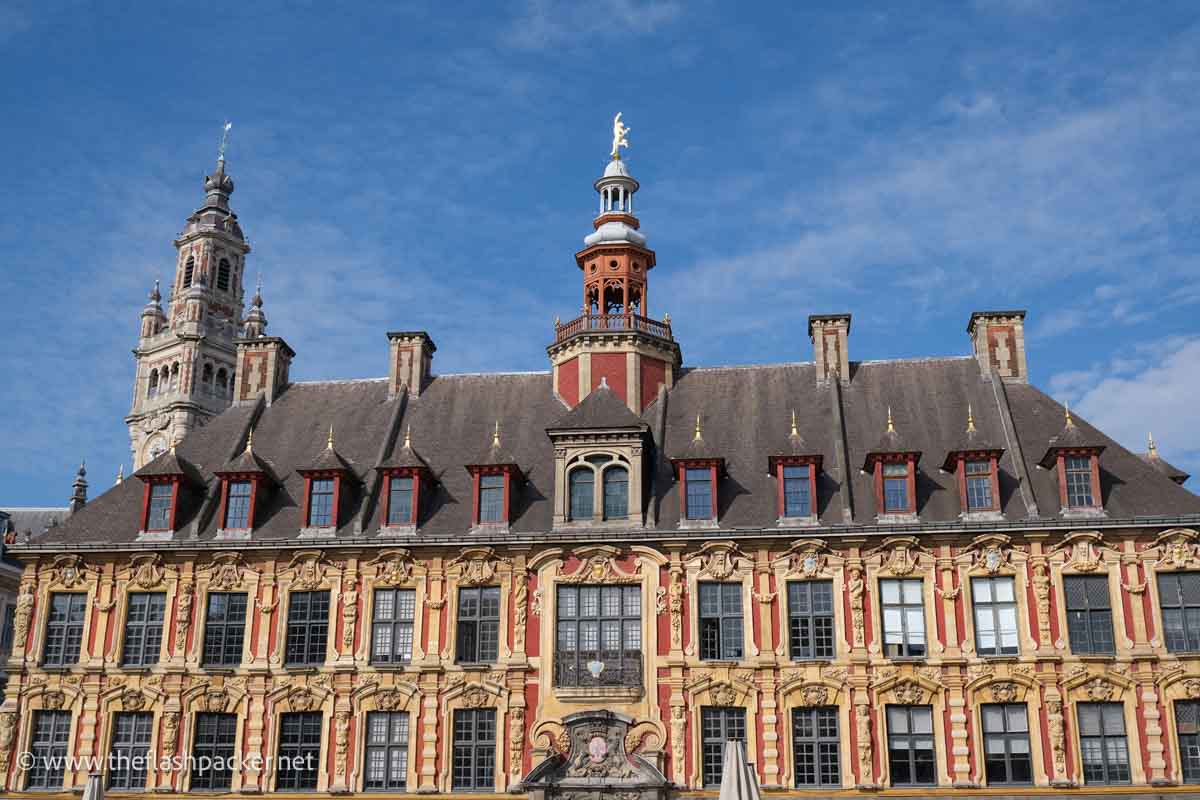
Built in the mid-17th century, this former stock exchange comprises 24 small Flemish Renaissance buildings arranged around a porticoed interior courtyard. Before it was established, most trading took place outside, placing traders were at the mercy of the elements. To prevent them from falling sick, La Veille Bourse was commissioned to provide private houses supporting trading in the coldest months.
Today, this gorgeous courtyard is often filled with second-hand bookstalls, chess players and flower vendors.
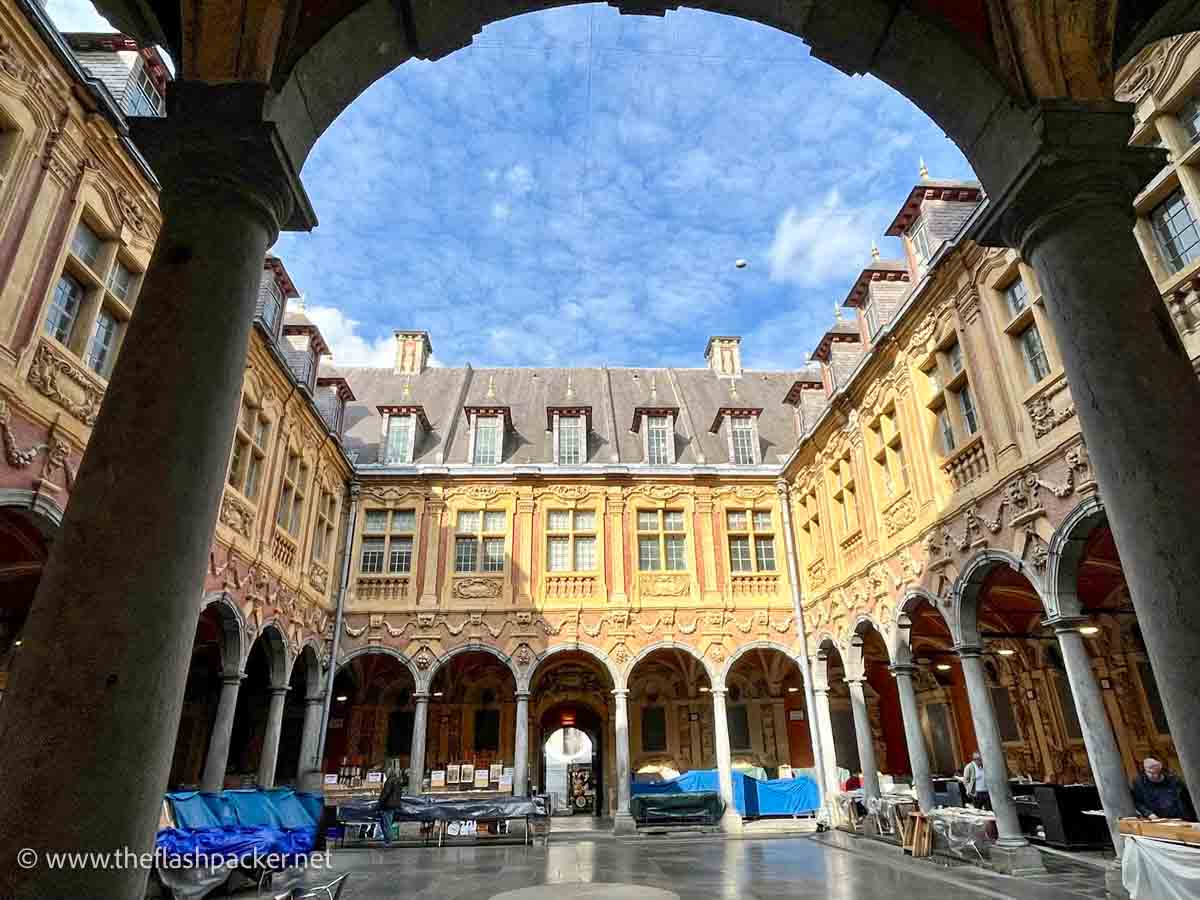
6. Grand Place
Officially known as Place du Général-de-Gaulle, Grand Place is the heart of the city and showcases Lille’s architectural heritage. Walk up the steps to the entrance of Théâtre du Nord and take in the view.
Grand Place is lined with flamboyant Flemish Baroque buildings, including the La Voix du Nord building, home to the largest newspaper in Northern France. At its centre stands the Column of the Goddess or Déesse Column, a symbol of the city’s resistance during the 1792 Siege of Lille.
At Christmas time, it has a giant Ferris wheel.
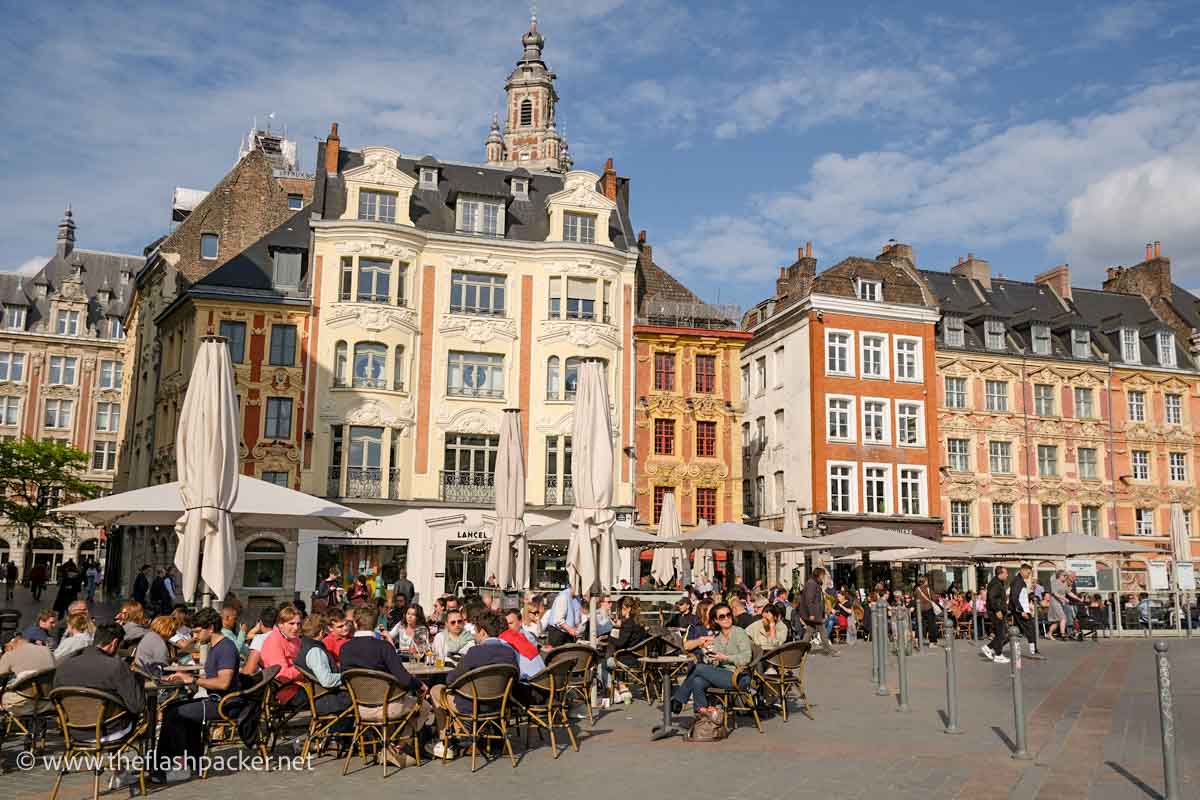
7. Place Rihour
Lacking the architectural bravado of the Grand Place or Place du Théâtre, this smaller square is best known for the 15th-century Palais Rihour, once the residence of the Dukes of Burgundy. It is also home to the friendly Lille Tourist Office and the city’s Christmas market.
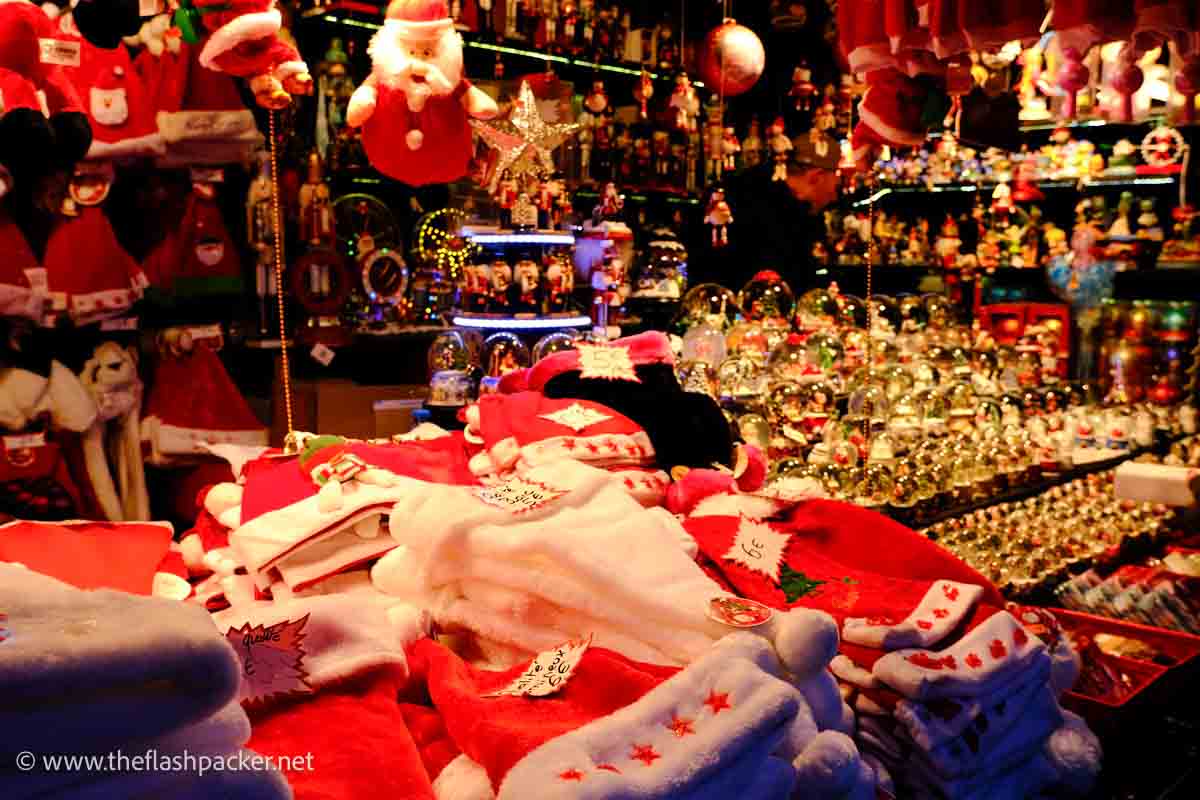
8. Church of St. Etienne (Saint Stephen’s Church)
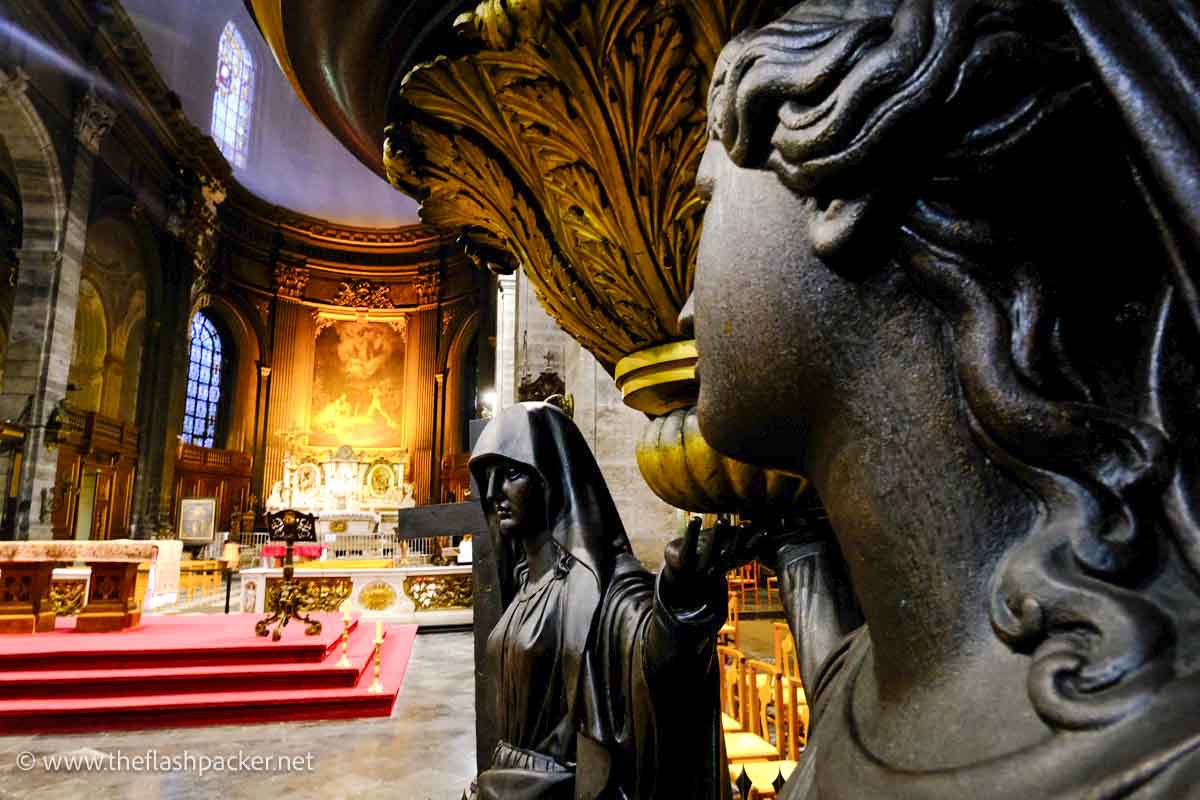
L’Église Saint Etienne is one of France’s largest Jesuit churches. Built in the 18th Century, it has an exquisite pulpit, crowned by angels and cherubs with Faith and Hope holding a vessel of St. Stephen’s martyrdom.
It is free to visit and you can check current opening times here.
9. Porte de Paris
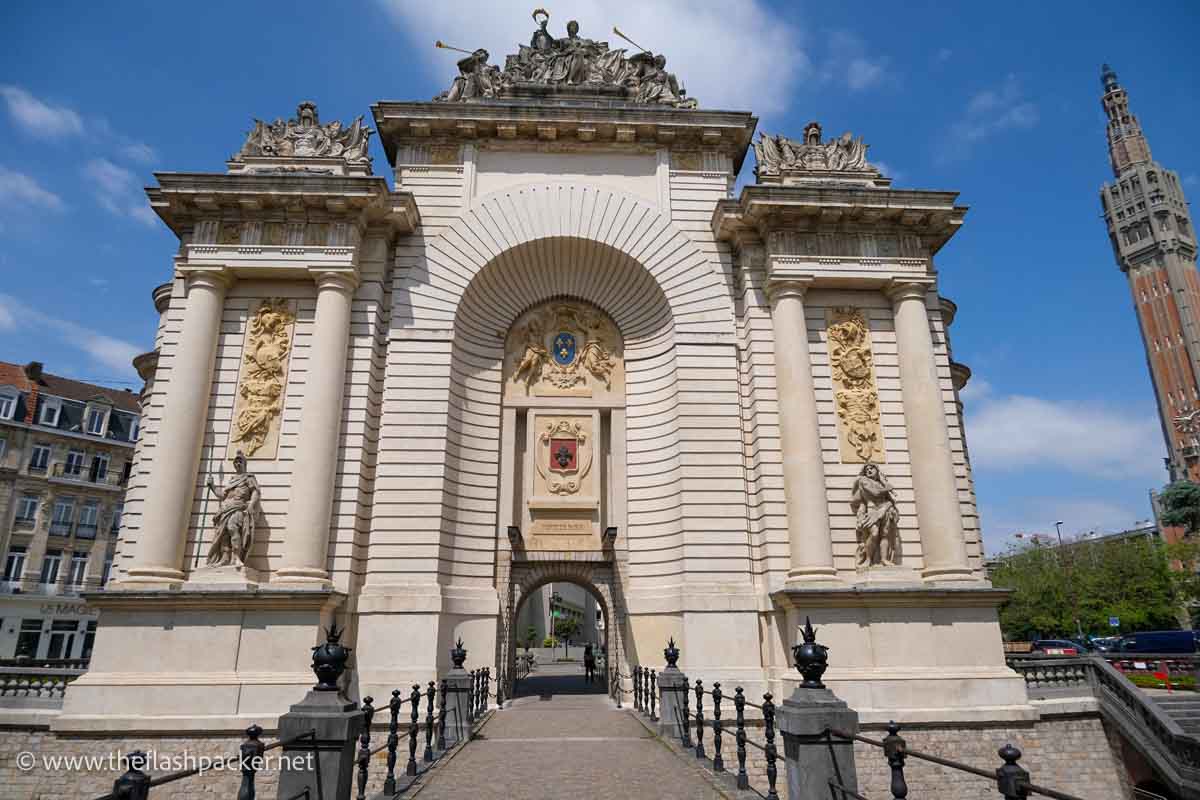
This triumphal arch was built Simon Vollant in the late 17th Century to commemorate Louis XIV’s capture of the city. It has an ornate Baroque design, featuring intricate carvings, statues and symbolic decorations celebrating the French king’s military victory.
10. Beffroi de Lille
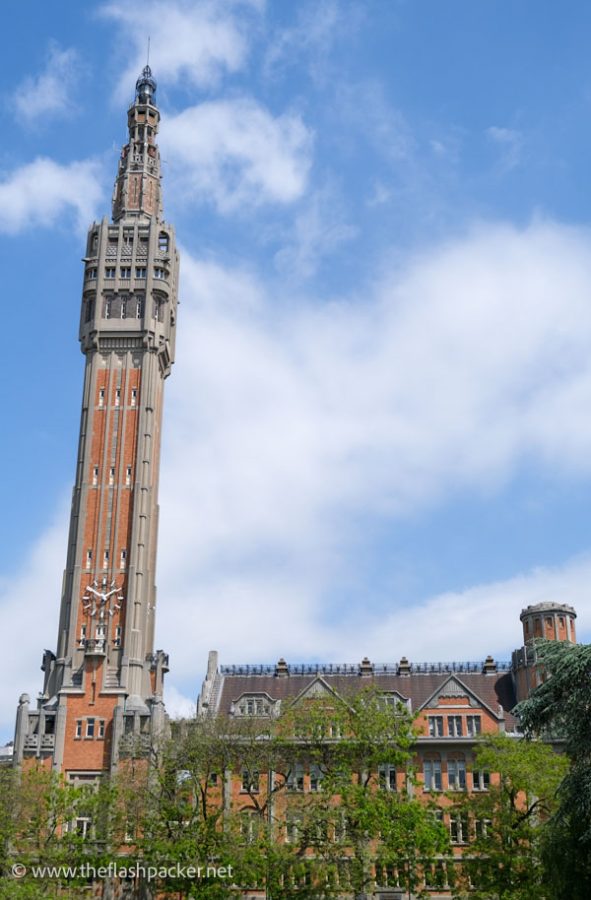
This Art Deco masterpiece stands 104 metres tall, making it the tallest municipal belfry in Europe. It was built between 1924 and 1932 and is a UNESCO World Heritage site.
Climb Lille’s belfry for panoramic views of the city and beyond. You need to walk the first 100 steps and then take the elevator – or walk a further 300 steps – to the top. I recommend taking the lift up and walking down as there is information about the belfry on each floor.
When I visited, you needed to book in advance. Find out how to do this here.
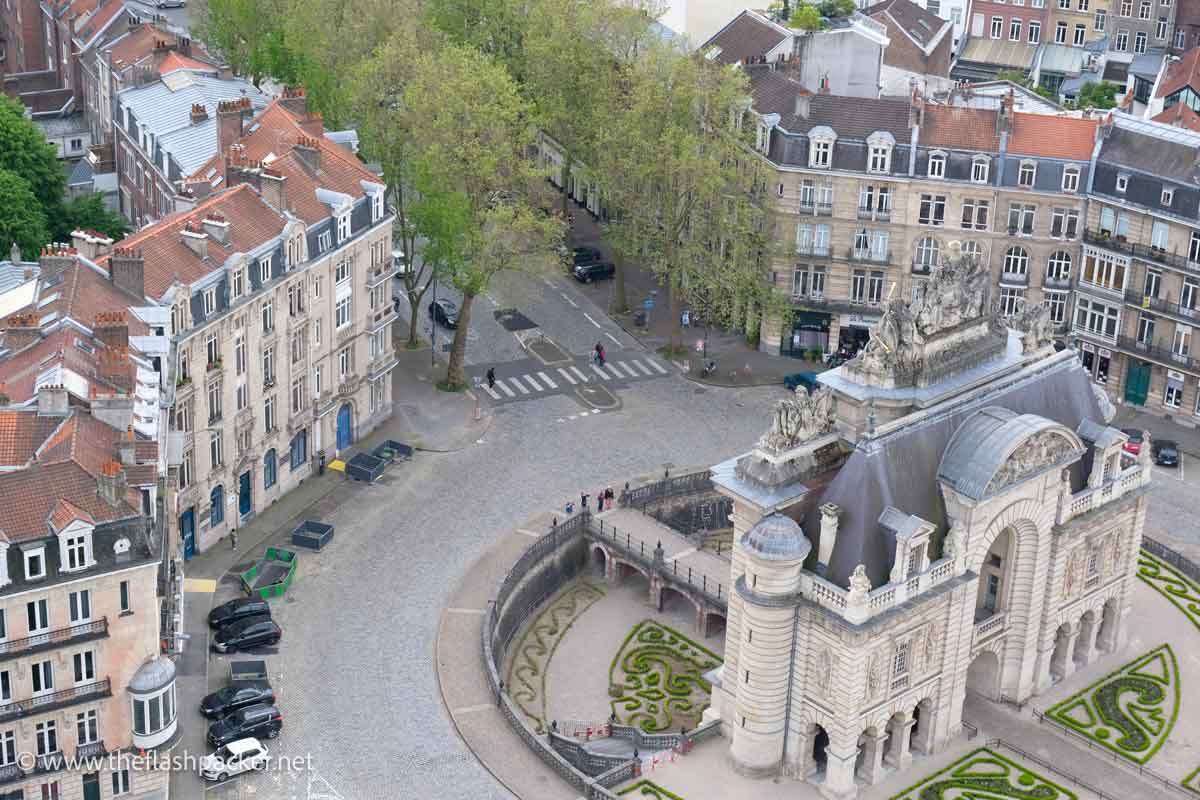
Day 2: Citadelle Vauban, Palais des Beaux-Arts and La Piscine de Roubaix
You can visit these places in any order you like but this itinerary worked for me. I started at the Citadel of Lille, which is northwest of the Old Town, and then visited Palais des Beaux-Arts.
From here, I took the metro to Roubaix where I had lunch before visiting La Piscine art gallery.
If you are short on time, I recommend prioritising Palais des Beaux-Arts and La Piscine de Roubaix.
Citadel of Lille
Designed by famed military architect Vauban in 1667, this star-shaped fortress is one of the best-preserved examples of 17th-century military architecture. Nicknamed the “Queen of Citadels,” it was built to defend Lille and showcases Vauban’s expertise in fortifications with its intricate layout and bastions.
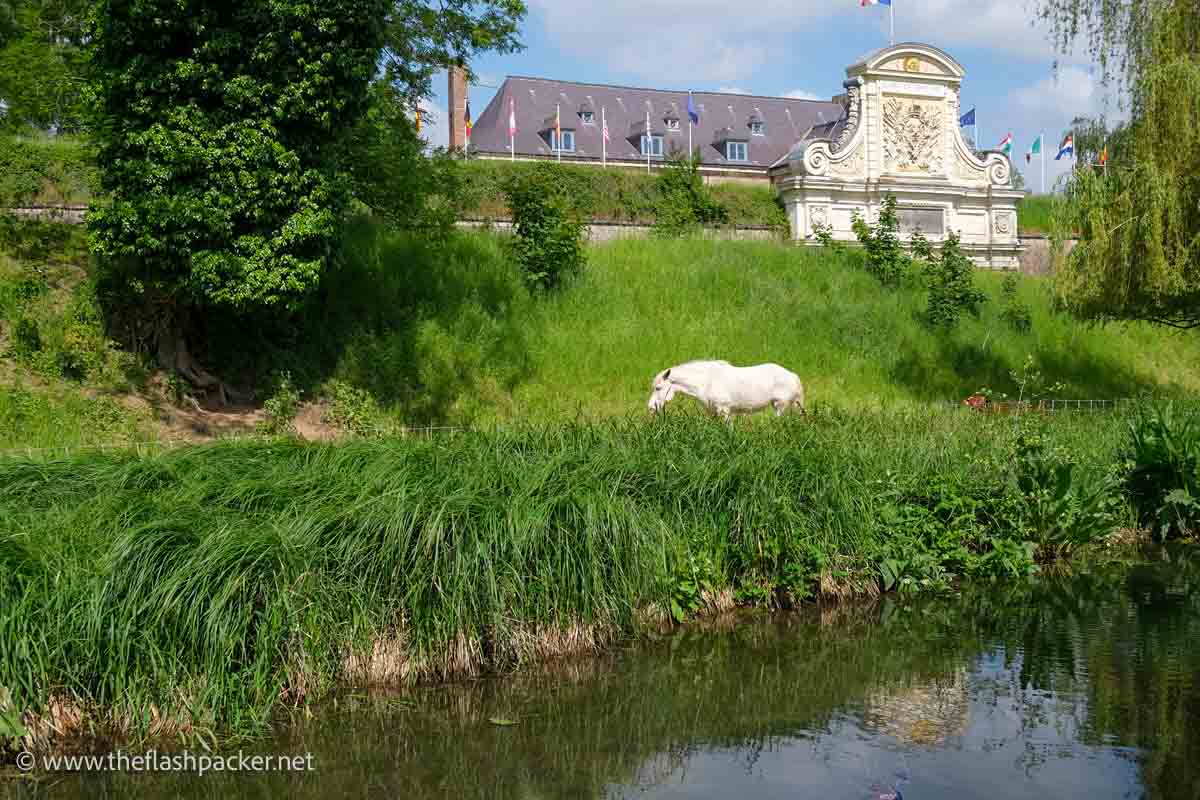
As the citadel is still used by the French military, it is off-limits to visitors. However, you may be able to see it on a guided tour organised by the Lille Tourist Office.
You can still admire it from the drawbridge and it is set in a gorgeous public park, Parc de la Citadelle. It’s not often you visit a park with grazing sheep, horses and donkeys.
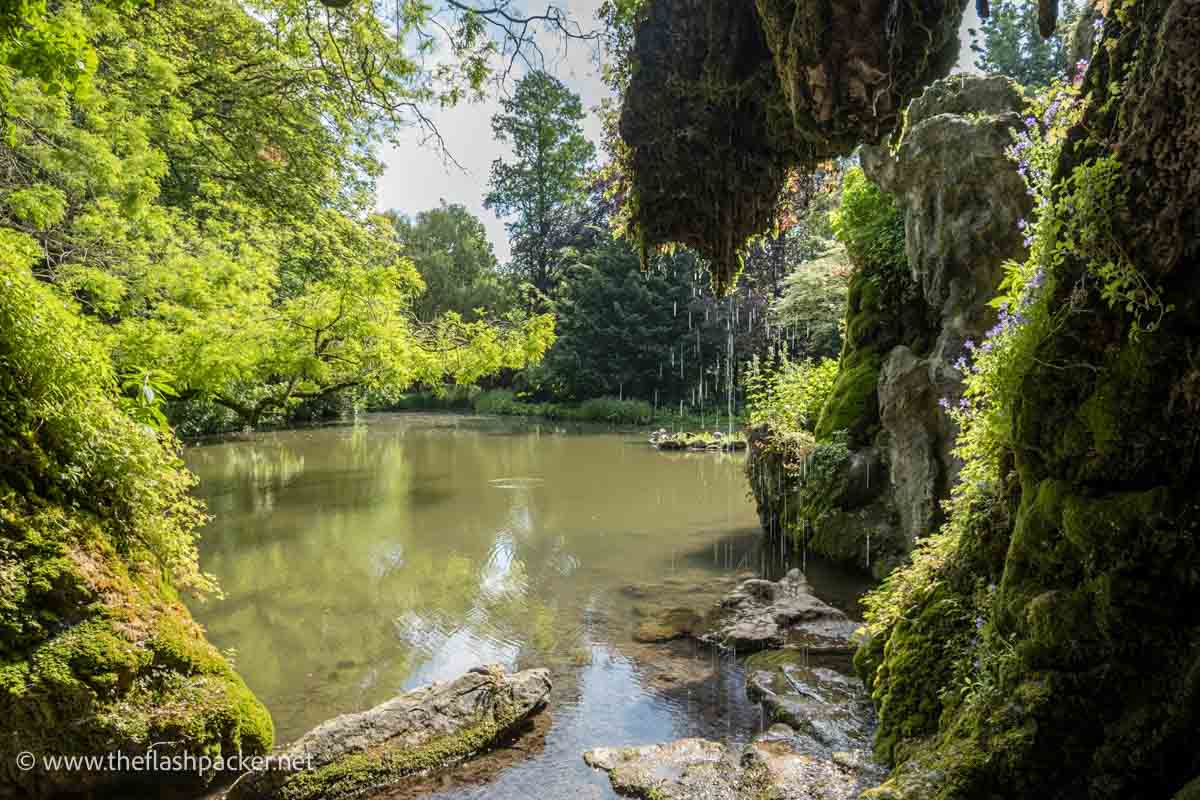
Palais des Beaux-Arts
This is Lille’s cultural calling card, a fine art gallery second only to the Louvre in Paris in size and stature. Napoleon used the spoils of war to establish the Palais des Beaux-Arts in the early 1800s, his aim to popularise art.
I recommend working your way chronologically, starting at the basement level with art from the Renaissance period. On the upper floor, there are muscular Rubens, a smattering of Sisleys and expressive Goyas. There is also a fine collection of Rodin sculptures, the most striking of which is Les Bourgeois de Calais.
It’s hard to pick a favourite but I did love the pair of paintings by Dirk Bouts (1420 – 1475) that were once part of a triptych.
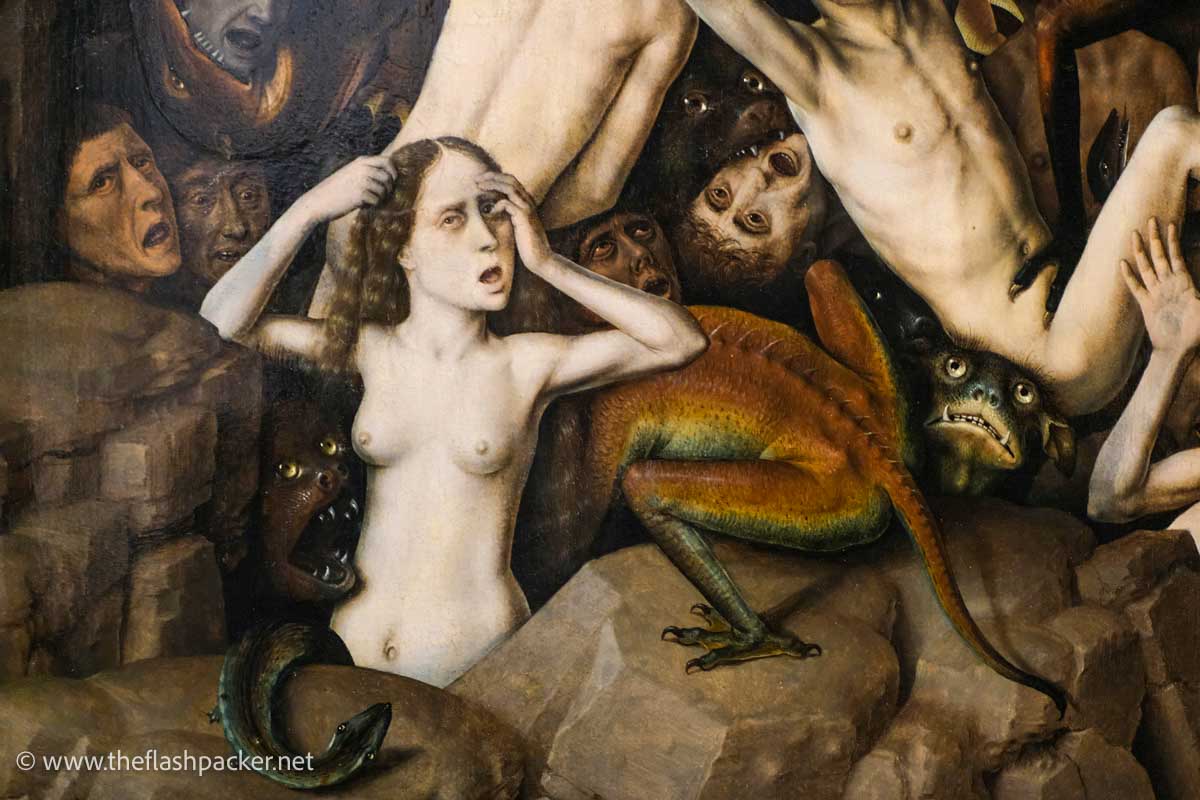
The painting to your right depicts the righteous ascending into Heaven. The dammed souls featured in the left-hand side painting weren’t so lucky, descending to Hell to be tortured by demons for eternity.
Here are the current ticket prices and opening hours.
La Piscine de Roubaix
Officially known as La Piscine – Musée d’Art et d’Industrie André Diligent, this remarkable museum is housed in a former swimming pool. Architect Albert Baert built this Art Deco masterpiece in 1932 to serve the local working-class community. The pool closed in 1985 and was transformed into a Fine Art and Applied Art gallery, opening its doors again in 2001.
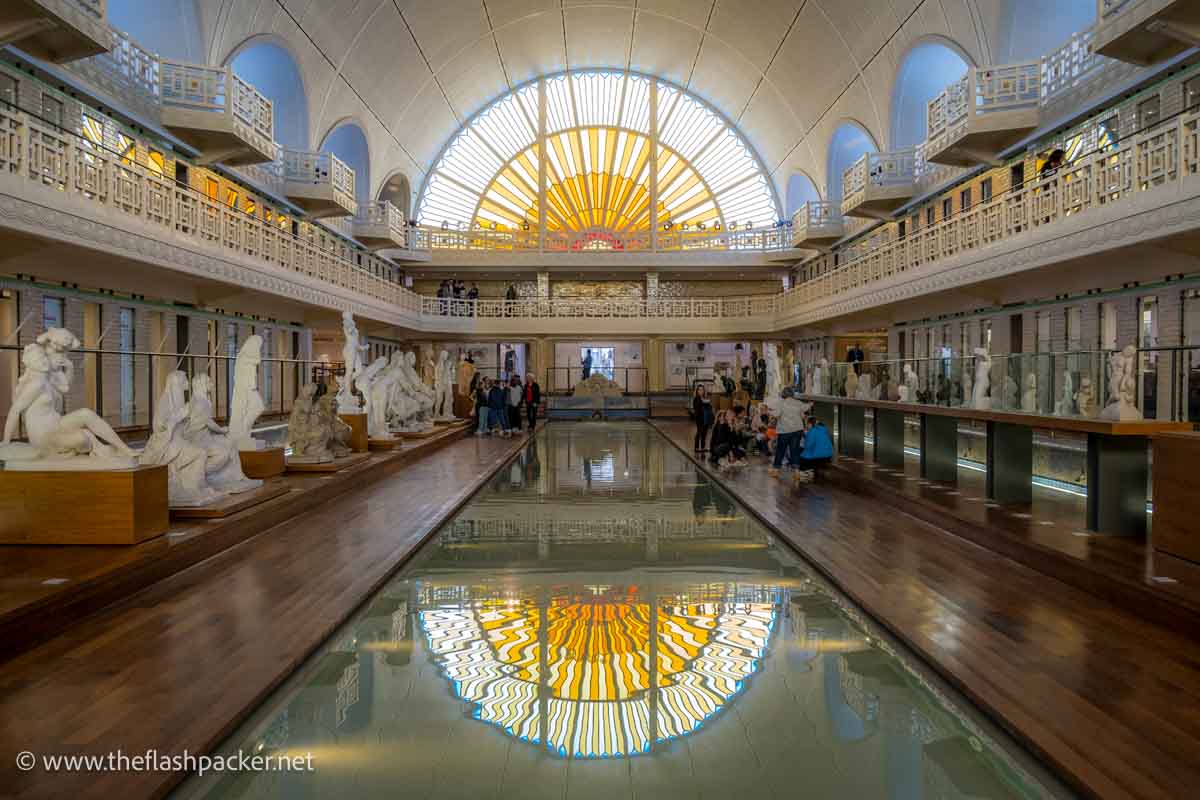
What makes La Piscine unique is the way it retains the spirit of the original swimming pool while offering a cultural experience.
The pool area has been preserved as the centrepiece, its basin filled with water and flanked by sculptures. Light streaming through the stained glass illuminates the space, reflected in the pool, and the changing cubicles have been beautifully restored. Every so often, there are recorded sounds of people enjoying themselves in the pool, a nostalgic tribute to its former life.
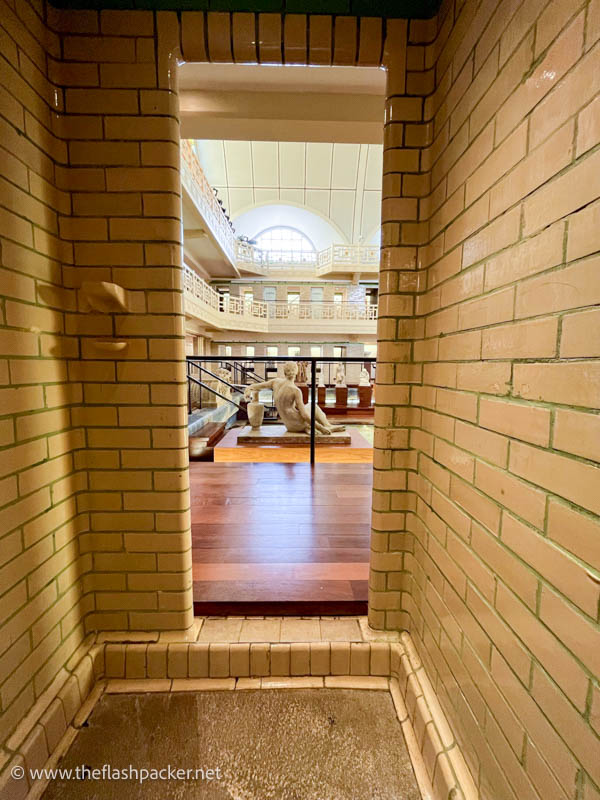
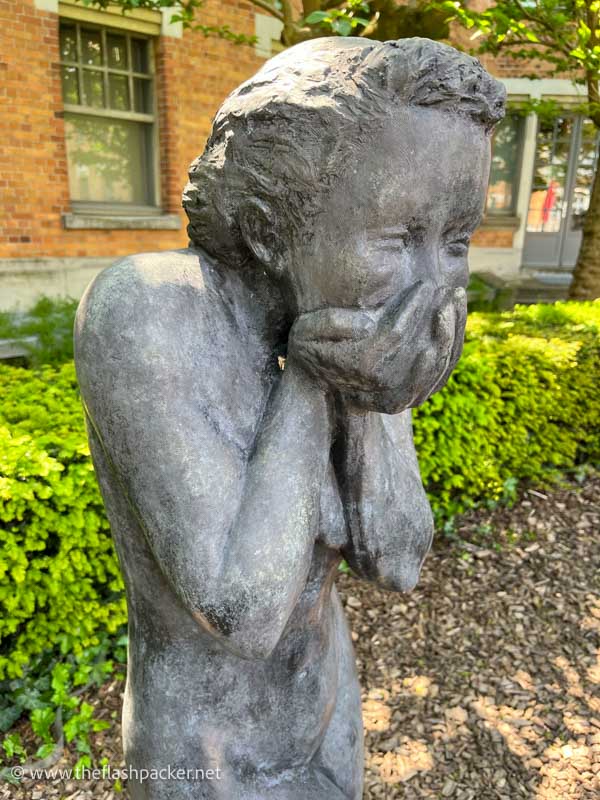
Step outside to visit the Botanical Garden with its playful statues or explore the museum’s textiles and fashion collection on the first floor. There is also a Sculptor’s Workshop on the ground floor and a fascinating exhibition on the history of Roubaix.
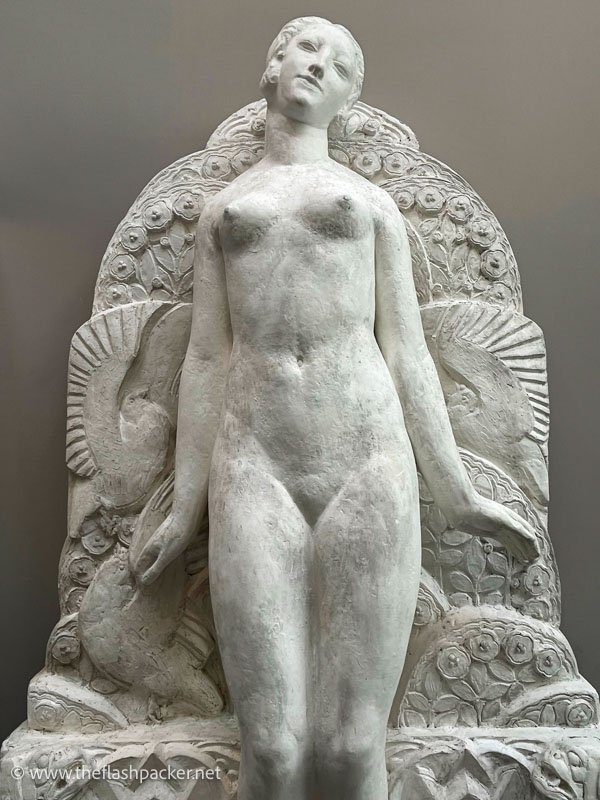
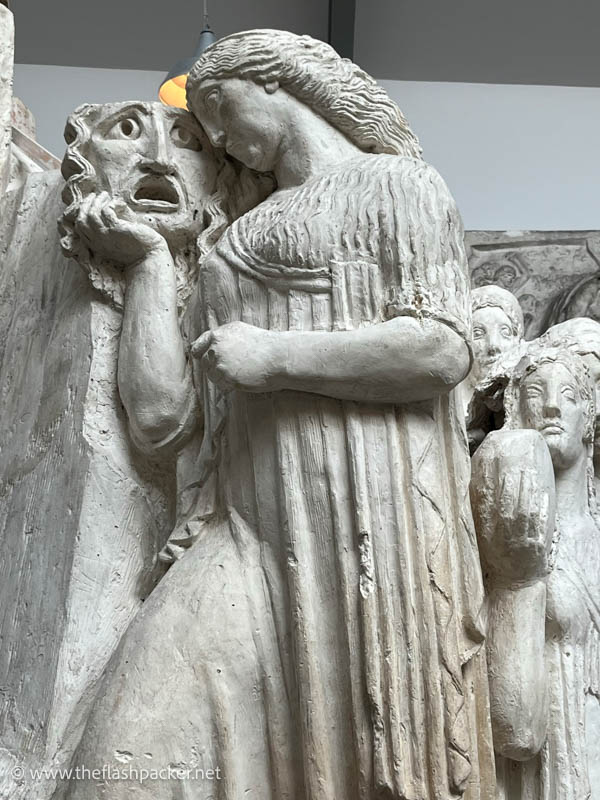
Check current visiting hours and admission prices on La Piscine’s official website.
Getting there
The easiest way to get from Lille to La Piscine de Roubaix is on Metro Line 2. Services on these driverless, two-carriage trains are frequent and the journey between Lille and Gare Jean Lebas takes 20 minutes.
La Piscine is a 5-10 minute walk from the train station.
Roubaix is also served by mainline trains. Although the journey time is quicker (ten minutes), services are less frequent.
Where to eat in Roubaix
I had lunch at the L’Hacienda Restaurant before visiting Las Piscine Roubaix. This friendly, family-run restaurant serves tasty food at a reasonable price.
When to Visit
Visit Lille between May and September for longer days and the best chance of dry and warm weather. My last visit was in May and I drank cooling beer under blue skies.
If Christmas markets are your thing, plan your visit for December (this was my first visit). Although Lille’s Christmas market isn’t the best I have visited, the festive lights were magical.
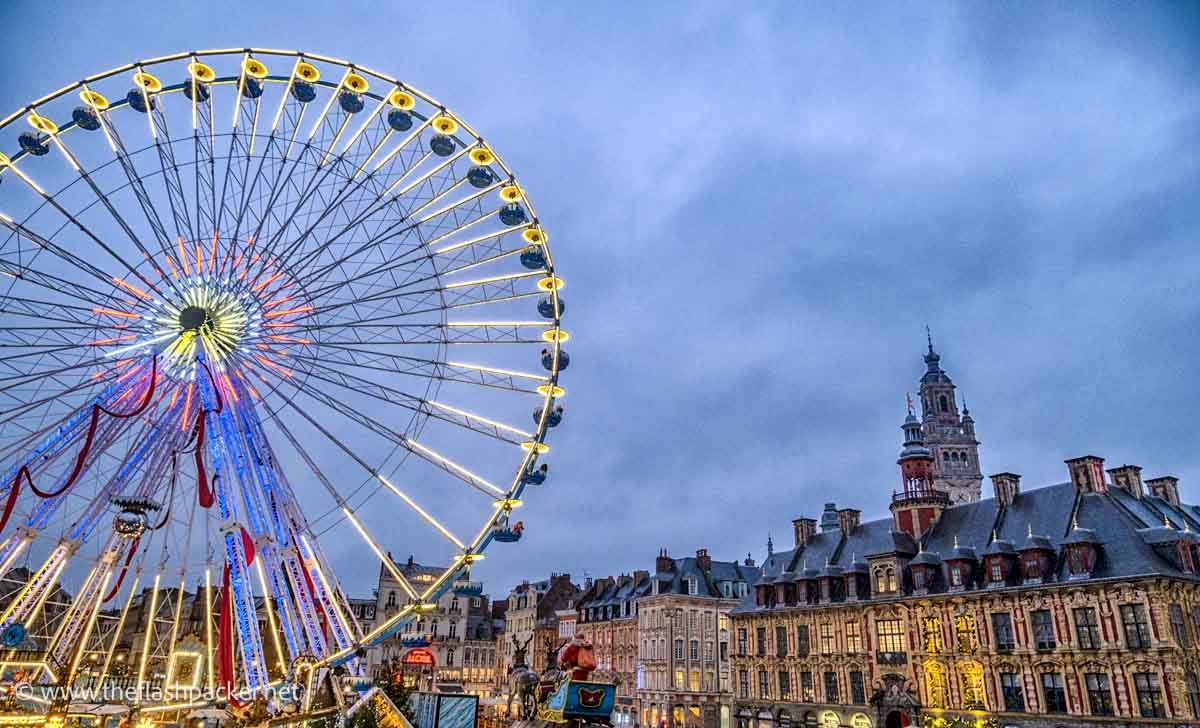
Getting to Lille by Train
Lille has two train stations: Lille Flandres and Lille Europe.
Lille Flandres, in the Old Town, serves most trains from cities in France and Belgium. Eurostar trains from Brussels and London and some TGV services go into Lille Europe, a ten-minute walk from Lille Flandres.
- London: 1 hour 22 mins
- Paris: 1 hour 3 mins
- Brussels: 44 minutes
Check train times here.
Where to Stay
As one of France’s biggest cities, Lille has plenty of places to stay. However, to be in the thick of things, pick a central location in and around Vieux Lille.
I enjoyed my stay at Hotel Boa, BW Signature Collection on my last trip. This 4-star hotel is perfect if you are looking for a quiet, centrally-located hotel with superb customer service. The complimentary minibar was a lovely touch.
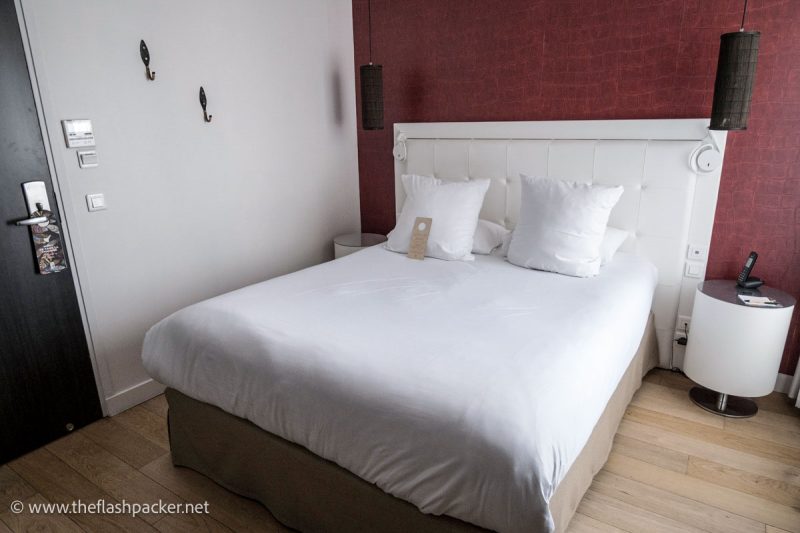
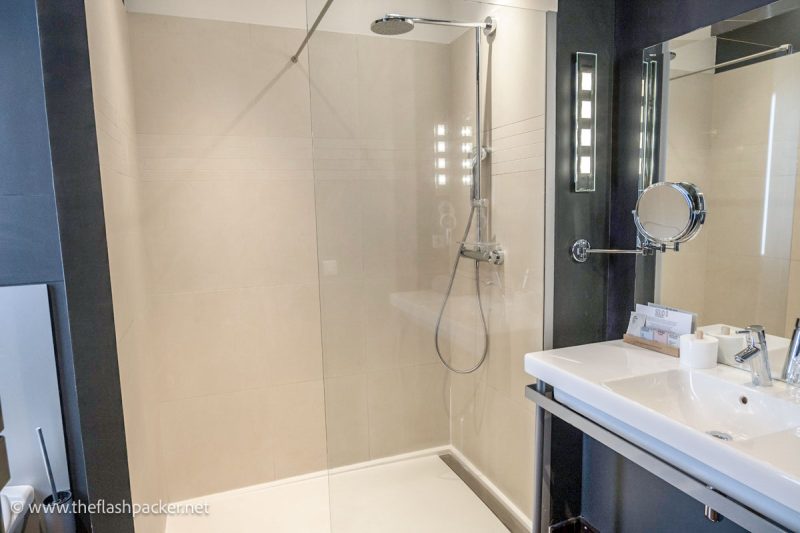
On a previous visit, I chose Ibis Lille Centre Gare. This 3-star hotel close to Lille Flandres station was comfortable and affordable.
If neither of these hotels are a good fit for you, take a look at Grand Hotel Bellevue – Grand Place. This 4-star hotel is right in the thick of things on the Grand Place and a good breakfast is included in the room rate.
Hotel Lille Europe is a popular budget choice close to Lille-Flandres Station.
Ready to spend a weekend in Lille?
I hope that you like Lille as much as I did. If you are travelling solo in France, it’s relatively safe and easy to explore. And if you have just a day there, my 1-day Lille itinerary might help you plan your visit.
Lille may not win you over as quickly as other northern French cities such as Reims, Colmar or Strasbourg, but dismiss it at your peril. And if you are spending longer here, why not take a day trip to Tournai to visit its UNESCO-listed cathedral? It’s only 30 minutes by train.
Happy travels!
PS. If you’ve found my Lille city break guide helpful, Pin it to read later!
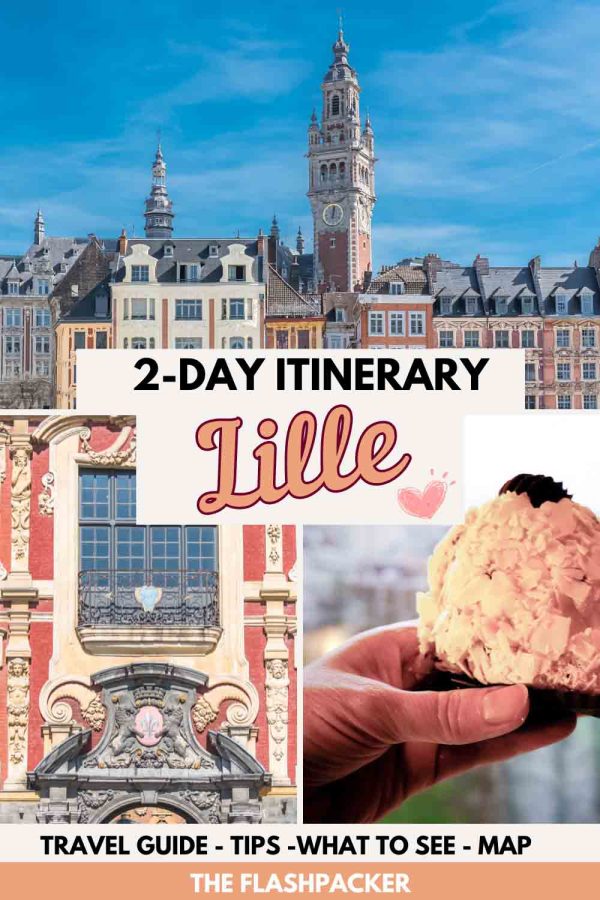
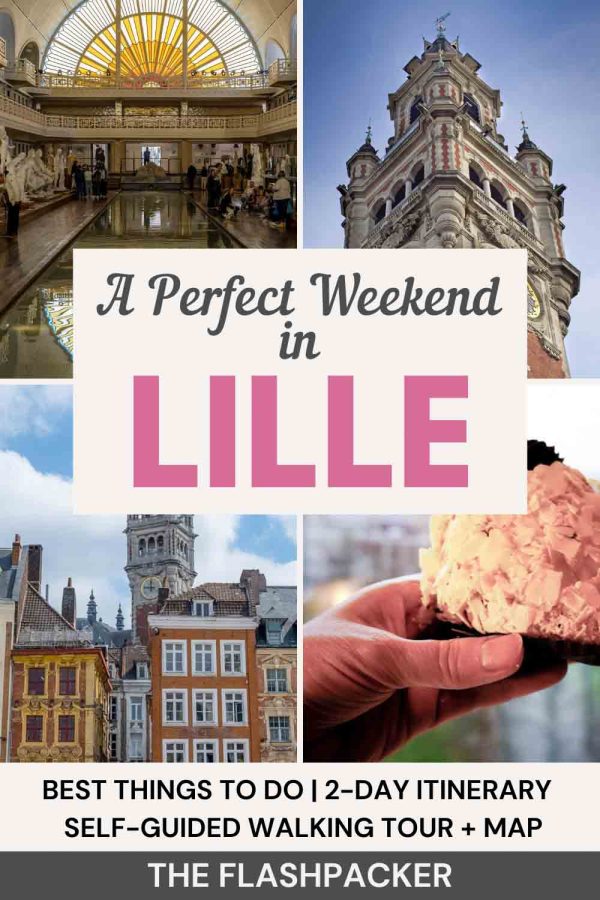

About Bridget
Bridget Coleman has been a passionate traveller for more than 30 years. She has visited 70+ countries, most as a solo traveller.
Articles on this site reflect her first-hand experiences.
To get in touch, email her at hello@theflashpacker.net or follow her on social media.
